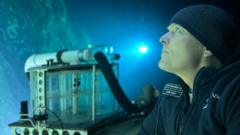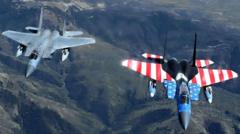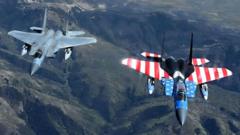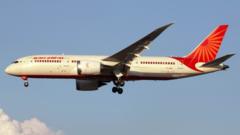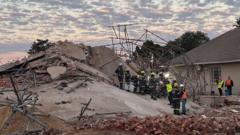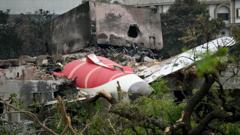The safety reputation of Boeing's 787 Dreamliner faces scrutiny as whistleblower allegations and a recent fatal incident emerge, while investigators seek answers to the crash.
Boeing 787 Dreamliner: Safety Legacy Shaken by Recent Tragedy and Whistleblower Claims

Boeing 787 Dreamliner: Safety Legacy Shaken by Recent Tragedy and Whistleblower Claims
Exploring the complexities of the Boeing 787 Dreamliner following the tragic crash of Air India flight 171.
In a somber turn of events, the Boeing 787 Dreamliner, once revered for its safety record, has found itself at the center of controversy following the tragic crash of Air India flight 171, which resulted in the loss of at least 270 lives. This incident, occurring mere moments after takeoff, has spurred investigations into not only the crash itself but also the longstanding safety claims surrounding the aircraft, a staple in the skies since its debut over a decade ago.
Boeing proudly asserted the Dreamliner's reliability, stating that it had flown for nearly 15 years with more than a billion passengers without a single fatality. Currently, over 1,100 of these planes service various routes worldwide. However, the recent crash has brought attention to previous whistleblower reports raising concerns about production standards associated with the aircraft.
Imagine a cold December morning in 2009, when the 787 Dreamliner took to the skies for its inaugural flight, marking the culmination of years of innovative design and substantial investment. Developed during a period of rising fuel prices, the Dreamliner was designed to redefine long-haul travel with better fuel efficiency. This shift in focus, particularly after the 9/11 attacks, saw airlines demanding aircraft capable of operating economically on less-traveled routes, a vision that effectively challenged Airbus's strategy of creating larger jets for busy hubs.
However, the 787, a pioneer in composite materials and advanced aerodynamics, soon faced challenges. Notably, in January 2013, the aircraft's lithium-ion batteries caught fire, leading to a worldwide grounding while safety concerns were addressed. Although operations resumed, Boeing's production faced serious challenges, particularly following the establishment of a new assembly line in North Charleston, South Carolina, which attracted criticism for a perceived decline in quality control.
The consequences of these production issues became more apparent as multiple defects emerged, prompting halts in deliveries and revealing potentially "non-conforming" parts, as reported by whistleblowers like John Barnett. His distress over expedited assembly practices, as well as others’ claims of substandard components being used, have drawn attention to deeper systemic issues within Boeing.
Amidst ongoing inquiries into the recent crash, the questions now loomed larger than before: can the current 787 fleet maintain its stellar safety record in light of these allegations? Analysts remain divided, with some asserting that years of operational data suggest any major flaws would likely have surfaced by now, while others express grave concerns over the potential for undetected defects remaining in the existing fleet.
As investigators work to demystify the causes of the Air India tragedy, the scrutiny over the 787's production safety continues to grow. The stakes are high, as they involve not only the reputation of Boeing but also the safety of countless passengers who rely on its aircraft. While the company maintains that current models have been sufficiently validated for safety and durability, the resonating fears from whistleblowers hint at a rugged journey ahead for Boeing's most notable airplane.
Boeing proudly asserted the Dreamliner's reliability, stating that it had flown for nearly 15 years with more than a billion passengers without a single fatality. Currently, over 1,100 of these planes service various routes worldwide. However, the recent crash has brought attention to previous whistleblower reports raising concerns about production standards associated with the aircraft.
Imagine a cold December morning in 2009, when the 787 Dreamliner took to the skies for its inaugural flight, marking the culmination of years of innovative design and substantial investment. Developed during a period of rising fuel prices, the Dreamliner was designed to redefine long-haul travel with better fuel efficiency. This shift in focus, particularly after the 9/11 attacks, saw airlines demanding aircraft capable of operating economically on less-traveled routes, a vision that effectively challenged Airbus's strategy of creating larger jets for busy hubs.
However, the 787, a pioneer in composite materials and advanced aerodynamics, soon faced challenges. Notably, in January 2013, the aircraft's lithium-ion batteries caught fire, leading to a worldwide grounding while safety concerns were addressed. Although operations resumed, Boeing's production faced serious challenges, particularly following the establishment of a new assembly line in North Charleston, South Carolina, which attracted criticism for a perceived decline in quality control.
The consequences of these production issues became more apparent as multiple defects emerged, prompting halts in deliveries and revealing potentially "non-conforming" parts, as reported by whistleblowers like John Barnett. His distress over expedited assembly practices, as well as others’ claims of substandard components being used, have drawn attention to deeper systemic issues within Boeing.
Amidst ongoing inquiries into the recent crash, the questions now loomed larger than before: can the current 787 fleet maintain its stellar safety record in light of these allegations? Analysts remain divided, with some asserting that years of operational data suggest any major flaws would likely have surfaced by now, while others express grave concerns over the potential for undetected defects remaining in the existing fleet.
As investigators work to demystify the causes of the Air India tragedy, the scrutiny over the 787's production safety continues to grow. The stakes are high, as they involve not only the reputation of Boeing but also the safety of countless passengers who rely on its aircraft. While the company maintains that current models have been sufficiently validated for safety and durability, the resonating fears from whistleblowers hint at a rugged journey ahead for Boeing's most notable airplane.




